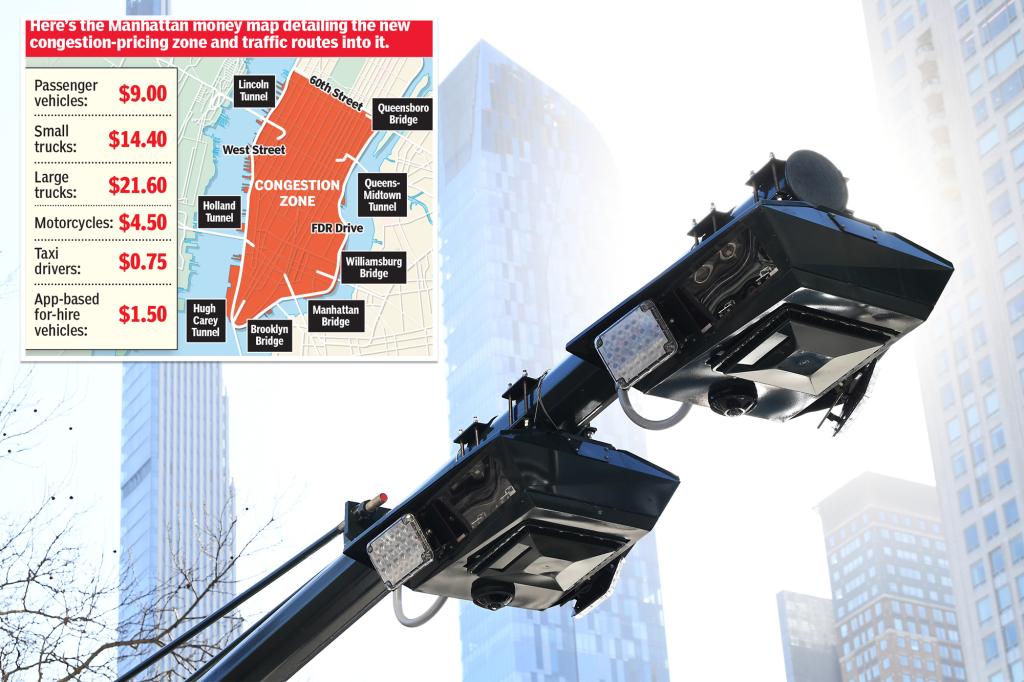Summarize this content to 2000 words in 6 paragraphs
New York State Democratic Party chairman Jay Jacobs backed Gov. Kathy Hochul’s controversial $9 congestion toll as a “good idea.”
Jacobs defended the new fee on New Yorkers and other commuters driving into Manhattan below 60th Street — all while saying he opposed raising taxes on wealthy residents because they’ll flee the state.
“Friends of mine. People I know with lots of money. They are leaving New York,” Jacobs said during a Capitol Pressroom radio interview.
“New York is a very high taxed state. They can’t stand the estate taxes. You go down to the state of Florida — different game.”
He said it’s “garbage” for pro-tax advocates to argue otherwise.
“There are people I know who have moved out of New York for six months plus of the year to just to avoid paying these taxes …The more you increase the tax rate, the more people leave. What are you going to do? You’re going to lower tax receipts,” Jacobs said.
“If you raise [the income tax], they’re going to leave in larger numbers.”
The combined state-and-New York City income taxes on the highest earners is nearly 15% and Jacobs said they pay a disproportionate chunk of taxes to fund the government.
Hochul has ruled out broad-based tax hikes, but she also pledged to come up with revenues to pay for the MTA’s newly proposed, $68 billion, five year capital plan.
Hochul’s budget director Blake Washington said last week, “I think taxes generally will be part of the discussion.”
Meanwhile Jacobs, an ally of the governor who is also the Nassau County Democratic leader, defended Hochul’s revised, first-in-the-nation congestion pricing plan as a “good idea” — moments after opposing higher taxes on the wealthy.
“It’s not a tax. It’s a user fee,” Jacobs said of the $9 toll, which is set to launch Jan. 5 and could be hiked to $15 by 2031.
“I won’t stand for the Republicans telling us it’s a tax because it isn’t.”
He rattled off the same arguments for the toll that Hochul and transit advocates have made: curbing traffic and pollution and generating a new revenue stream to help fund mass transit capital improvements on the Long Island Railroad and Metro-North commuter rail lines as well as the New York City subway and bus system.
He said “traffic gets worse and worse” in Manhattan.
“If you have a heart attack in Manhattan — good luck,” Jacobs said, referring to ambulance response times.
Hochul, the MTA and Dems have to do a better job explaining to suburbanites that the “user fee” will benefit them by helping fund capital improvements to public transit, he added.
He said less than 25% of Long Island residents drive into Manhattan, while most take the LIRR — and they can afford to pay the toll.
“These are not people at the lower end of the economic spectrum,” Jacobs claimed.
Jacobs, during a Post interview Thursday, explained his differing opinions — opposing higher incomes on the wealthy while supporting the congestion toll.
“I don’t think anyone is leaving New York over congestion pricing,” he said.
“Nobody likes to pay more for anything.”
He said congestion pricing opponents never came up with an alternative.
Nassau County Executive Bruce Blakeman, a Republican seeking re-election next year and toll opponent said, “The quickest way to turnaround the finances of the MTA is to get serious about law and order on our subways.”
Critics including Blakeman have long complained that the MTA loses a staggering $700 million from subway and bus fare evasion.
“The only ones pushing for congestion pricing are elitists who either don’t take the subway or don’t drive themselves,” Blakeman said.















